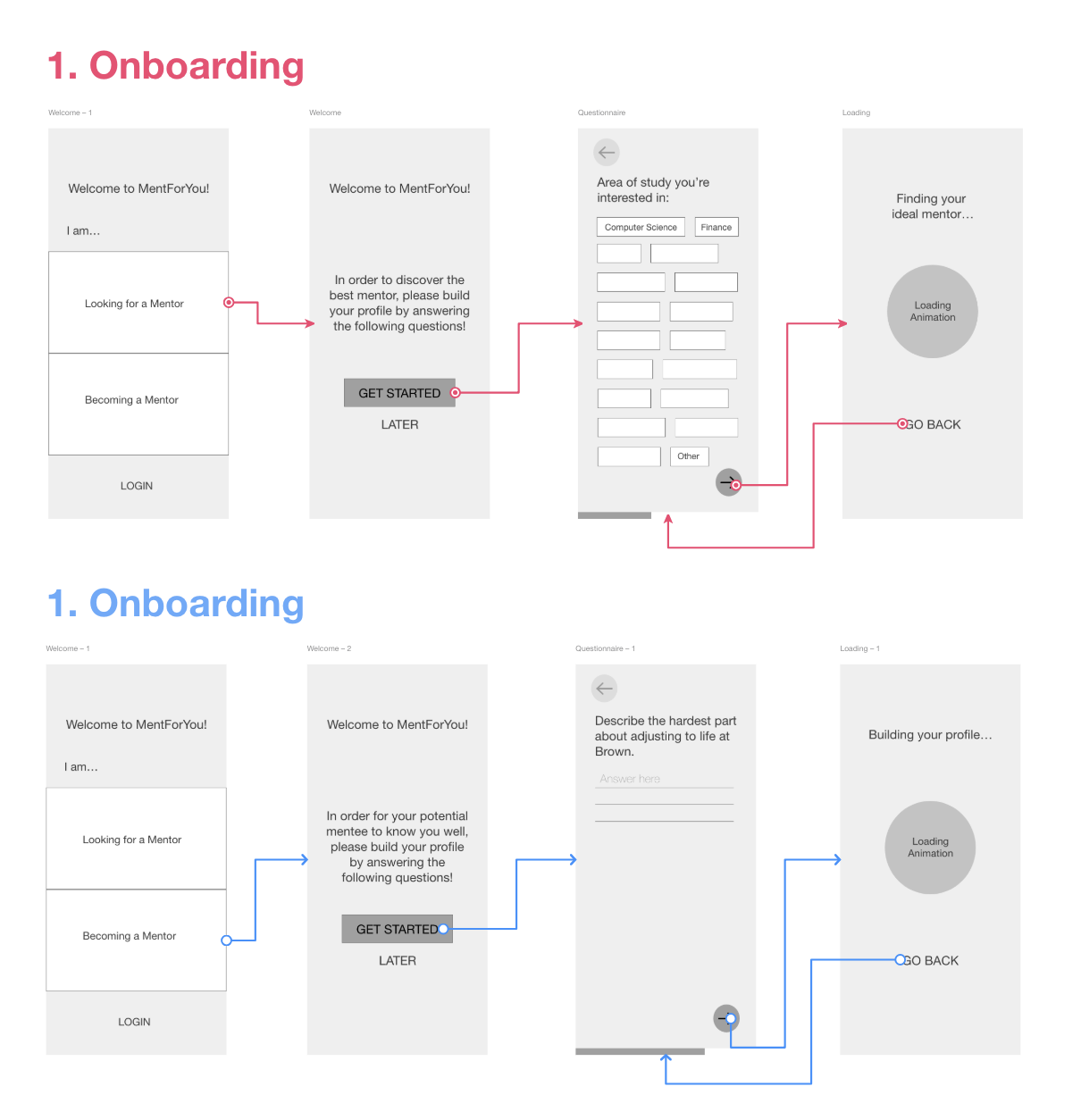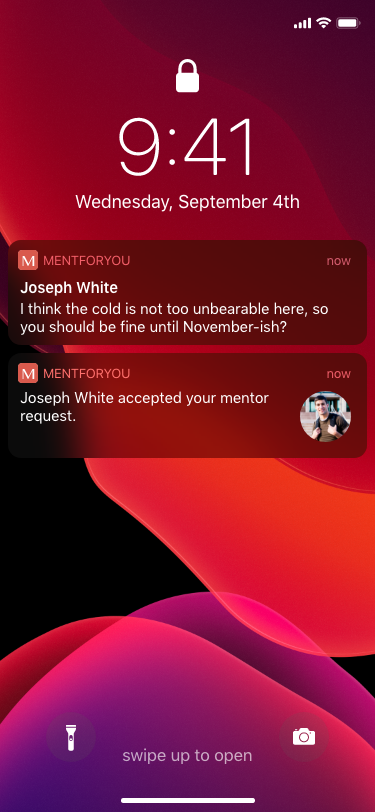
MentForYou
MentForYou
“A mobile app that connects new students with their ideal mentor.”

Challenge
There are many uncertainties when a student first enters college, and it’s hard to figure out how to get from point A to point B (both literally and metaphorically). Fortunately, there are upperclassmen who went through the exact same processes in the past, and therefore act as great resources to new students. However, every student has different interests, personalities and needs. Given these differences, how can a new student find the mentor that best fits them? In a similar vein, how can mentors be optimally connected with mentees to maximize the probability of providing the most relevant and useful advice?
Understanding the prompt & setting definitions
In order to have more clarity in what the prompt is asking for, I jotted down what comes to my mind when I think of mentorship at Brown and lingering questions.

How do we define “mentors” and “mentees”? How does one qualify for one?
How does the existing mentorship contribute to new students adjusting to a new environment (e.g. campus, major declaration, etc.)? What does it lack?
How do students feel about mentorship in general? What do they expect out of it?
Why do students look for a mentor/mentee figure?
Research—Online Searches and Qualitative Interviews
I researched primarily through Brown website and several interviews with current students in order to better understand what students struggled with the most while adjusting to a life at Brown, what kind of mentorship is currently available for new students, assess their pros and cons, and gauge pain points of the entire current user journey.
Understanding the existing system — What Brown currently offers to all new students:

Current Flow — How new students currently discover their mentor figures and get their questions answered.

KEY FINDINGS

In sum, although they may have different needs, both parties believe the more similarities they share between a mentor and a mentee, the more helpful and personal their mentorship can be.

Digging deeper into the problem space…
Within the existing formal mentorship programs at Brown, both new students and upperclassmen do not have any input or control in the pairing process.
As a result, the assigned mentors and mentees are not guaranteed to (and often times don’t) share similar interests and backgrounds as the mentee.
In the worst case that the new students are stuck with mentees that don’t share any similarities, there are not a whole lot opportunities for them to meet more upperclassmen.
Mission Statement
“Mentorship at Brown is not only a guidance to excel academically, but it is also a voluntary sharing of relevant experiences and providing most clarity at a time of uncertainties so that a new member to the community feels belonged and is set up to thrive. ”
Design Solution
Creating a welcoming, reliable space amongst new students and upperclassmen in a form of a mobile app where they can bond on their own based on their mutual interests and backgrounds.

Defining terminologies within this experience:
👨💻“Mentee”:
(n) any new student (usually a first-year student, but including transfer student, or visiting student) at Brown, who seeks for advising in adjusting to a new campus and environment.
👩🎓“Mentor”:
(n) any returning student to Brown who is older than the new student, has experience in navigating through life at Brown, and is willing to listen and help the new students in adjusting to their new life on campus.
🧭”Mentorship”:
(n) an informal guidance provided by a mentor who imparts their knowledge and experiences (not only successes but also mistakes and failures) to their mentee, and sets up their mentee with most clarity.
Concept Ideation + User Flow
Key actions involved in finding your potential mentors:
building your profile (e.g. interests, backgrounds) based on questionnaire
finding upperclassmen who share mutual interests and backgrounds
messaging upperclassmen one wants to get to know more
requesting an upperclassman to become their mentor
Key actions involved in becoming a mentor:
building your profile (e.g. interests, backgrounds) based on questionnaire
replying back to underclassman and answer their needs
receiving requests from underclassmen to become their mentor

Sketches and lo-fi wireframes


How the user flow is interweaved into these wireframes




Unlike the old way, with the new experience, both parties have full control and access over who could be their mentor/mentees. Amongst the ones that they share interests, upon meeting several people, both parties will have easier time finding another individual who they could blossom their mentorship. Particularly, this model reflects the more proactive nature amongst the first-year students, and passive nature of upperclassmen. The expected journey is that the first-year students would reach out to the upperclassman first because upperclassmen do not usually go out of their way to find a freshman to help out. In the long-run, this space can be used as another opportunity to meet new people across class years.
Hi-Fi Mockups (from Mentee’s perspective)





